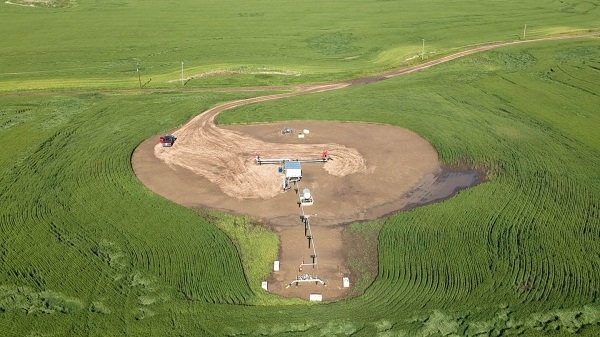Gerry Feehan
Gerry Feehan Receives the Legendary Invitation, A World Famous Newfoundland Tradition
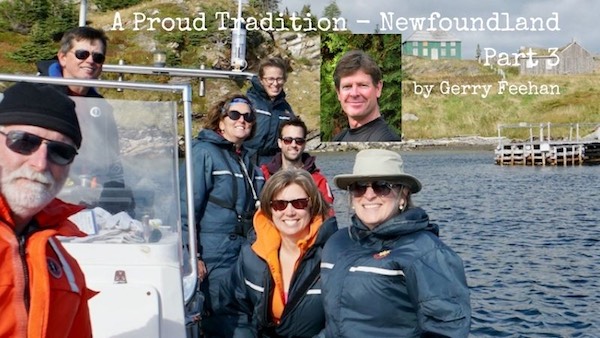
11By Gerry Feehan
This is the third of four parts in the Newfoundland series. Scroll down to find Part 1, Gros Morne, and part 2 North America’s Oldest European Settlement
If Newfoundlanders weren’t so damn friendly we’d have been on time for our Jiggs dinner.
Terra Nova National Park is situated in eastern Newfoundland, 399 sq km of rugged rock, trees and wetland, wrapped around idyllic fingers of Bonavista Bay. The Trans-Canada highway bisects the park, then continues southeast toward Come by Chance and eventually the capital, St. John’s, on the Avalon Peninsula. It was early October. Terra Nova was still open for business, but quiet, so we had our choice of primo campsites. As we checked in I grabbed a bag of firewood. It was going to be a cold night, with frost expected. The ranger stopped me, “No sense you paying for wood. The folks in site 17 just bought a big load. Just go over and join them when the fire starts.”
And so we did. And that’s how we met Burkey and Bev. Even before we reached their roaring fire, Burkey spotted us timidly approaching from the shadows, and without a word, pulled out spare chairs and began pouring drinks. It was Thursday before Thanksgiving. The Burkes were setting up camp, preparing for the arrival of friends and family, and prepping for the big occasion: Sunday’s Jiggs dinner. After a fun evening of chatter (interspersed with a few tunes from my ever-present ukulele) we rose to bid adieu. “You’ll come for dinner Sunday?” asked Barb. I did some quick calculating. We had a week left on The Rock but had yet to visit St. John’s. Plus there was the Irish Loop and Bonavista Peninsula to explore. And we had a long drive back west to Port Aux Basque, almost 1000km, in order to catch the ferry on Tuesday.
“Sure,” I said.

On Sunday we awoke to a gorgeous morning at the Cabot Highway RV Park, a few kilometers from the town of Trinity, on Bonavista Peninsula. (The intervening 3 days and our St John’s/Avalon/Irish Loop drive will be recounted in the fourth and final yarn of this series.) When we reached Trinity I headed straight through town, bound for the local pier, as I am wont to do. Preoccupied by the brightly painted clapboard homes, 19th century church spires and scenic fishing stages (houses hanging over the water used for cleaning cod), I failed to observe that the roadway was becoming dangerously narrow.
We ended up trapped on the town boat ramp, pointed seaward. There was no way to turn the motorhome around. Florence was starting in on my (justly-deserved) beratement when a boat pulled up to the wharf. “What are you after doing down there, b’y?” asked the operator with an amused look. With his guidance I was able to slowly reverse position and get the RV pointed away from the slippery slope and safely back toward land. I offered my thanks. “No trouble,” said he, bobbing in his boat. “I’m taking friends out for a tour of the bay this lovely morning. Would you and your wife like to join us?” I did some more calculating. It was a two-hour drive back to Terra Nova. Jiggs dinner was at 3pm. “We’d need to be back to shore by 1pm,” I said. “No worries,” he replied, “I’ll have you at the dock by noon at the latest.”
It was a fantastic outing. Skipper Bob and his partner Bonnie run www.trinityecotours.com. The tourist season was almost over and the day’s trip was just for fun. Although the usual fare is $90 a person, they refused to take our money. We followed the rugged coastline, where the remains of the ancient Appalachian Mountains slip into the sea. In Trinity Bay, while a whale spouted to starboard, we came alongside a fisherman hauling up net and cleaning cod. He offered us a bag overflowing with fillets and, with the waive of a hand, made it clear he wouldn’t accept payment.

Cod fishermen are a generous bunch

As we motored into a protected, hidden bay, the remains of a long-abandoned village came into view. Bonnie told us, “This place is known as Ireland’s Eye. On the other side of the island is a spot called Black Duck Cove. That’s where my dad lived until he was 11years old. In the mid 50’s the government began a resettlement program to get people who lived on remote islands to move to the mainland where there would be better access to services like hospitals and schools.”
In some respects it was forced relocation. Many people, rather than abandon their homes, floated their lodgings to the mainland communities. “The old place on Ireland’s Eye was left behind but my grandfather floated a house from Pope’s Harbour to New Bonaventure in August 1965. It was a saltbox style, with the porch and bathroom added later.”
Life was hard on The Rock 50 years ago.

Skipper Bob and the crew
Time flies when you’re playing on the ocean. It was after 2pm when Bob idled the boat back into the marina. We bid a hasty thank-you and adieu and raced for Terra Nova. When we arrived at the campground it was getting dark. All sites were vacant save one. Bev and Burkey were just breaking camp, headed back to Clarenville.
“We are so sorry,” I apologized. “No problem,” said Bev. “You said you were coming for scoff so I knew you’d be here. I did up a couple of plates. They’re still warm.”
A traditional Newfoundland Jiggs dinner consists of turkey, dressing, gravy, bread pudding, carrots, turnip, cabbage, mashed potatoes, pease pudding, figgy duff – and boiled salt beef. For dessert Barb likes to do blueberry crumble and partridgeberry cake topped with hot vanilla sauce. Simple really. And easy to whip up, especially from the cramped confines of your trailer, in a campground, in the cold. Each platter held enough food for three Jiggs dinners. Burkey laughed and told us that a Newfoundlander’s idea of fine dining is a full plate. I offered him two fresh cod fillets and, although it was a little like carrying coals to Newcastle, he graciously accepted.
Florence and I were the only campers in Terra Nova that night. As they drove away Burkey said, “No sense you buying firewood, there’s plenty left.” Bev waived goodbye and they rolled out of our lives.
I looked at the overflowing feast, loosed my belt and dug in.

Jiggs Dinner
Next time: St John’s and the Irish Loop
Gerry Feehan is an award-winning travel writer and photographer. He lives in Kimberley, BC.
 Gerry Feehan is an award-winning travel writer and photographer. He and his wife Florence live in Kimberley, BC!
Gerry Feehan is an award-winning travel writer and photographer. He and his wife Florence live in Kimberley, BC!
Thanks to Kennedy Wealth Management for sponsoring this series. Click on the ads and learn more about this long-term local business.
Gerry Feehan takes us to North America’s Oldest European Settlement
Click to read more travel stories.
Gerry Feehan
Abu Simbel
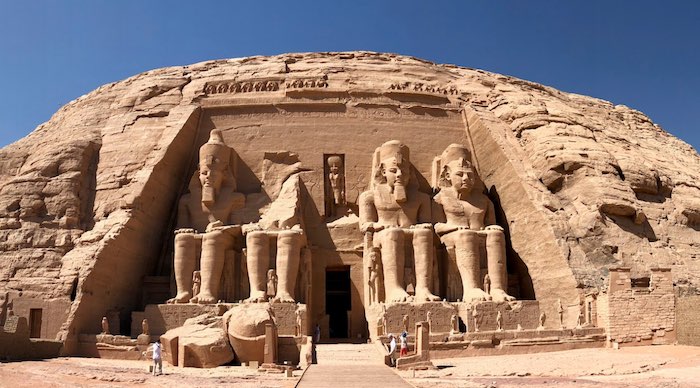
Abu Simbel is a marvel of ancient and modern engineering
I love looking out the window of an airplane at the earth far below, seeing where coast meets water or observing the eroded remains of some ancient formation in the changing light. Alas, the grimy desert sand hadn’t been cleaned from the windows of our EgyptAir jet, so we couldn’t see a thing as we flew over Lake Nasser en route to Abu Simbel. I was hopeful that this lack of attention to detail would not extend to other minor maintenance items, such as ensuring the cabin was pressurized or the fuel tank full.
We had just spent a week on a dahabiya sailboat cruising the Nile River, and after disembarking at Aswan, were headed further south to see one of Egypt’s great
monuments. There are a couple of ways to get to Abu Simbel from Aswan. You can ride a bus for 4 hours through the scorched Sahara Desert, or you can take a plane for the short 45-minute flight.
Opaque windows notwithstanding, I was glad we had chosen travel by air. Abu Simbel is spectacular, but there’s really not much to see except the monument itself and a small adjacent museum. So most tourists, us included, make the return trip in a day. And fortunately we had Sayed Mansour, an Egyptologist, on board. Sayed was there to explain all and clear our pained expressions.
Although it was early November, the intense Nubian sun was almost directly overhead, so Sayed led us to a quiet, shady spot where he began our introduction to
Egyptian history. Abu Simbel is a marvel of engineering — both modern and ancient. The temples were constructed during the reign of Ramses II. Carved from solid rock in a sandstone cliff overlooking the mighty river, these massive twin temples stood sentinel at a menacing bend in the Nile — and served as an intimidating obstacle to would-be invaders — for over 3000 years. But eventually Abu Simbel fell into disuse and succumbed to the inevitable, unrelenting Sahara. The site was nearly swallowed by sand when it was “rediscovered” by European adventurers in the early 19 th century. After years of excavation and restoration, the monuments resumed their original glory.
Then, in the 1960’s, Egyptian president Abdel Nasser decided to construct a new “High Dam” at Aswan. Doing so would create the largest man-made lake in the
world, 5250 sq km of backed-up Nile River. This ambitious project would bring economic benefit to parched Egypt, control the unpredictable annual Nile flood and also supply hydroelectric power to a poor, under-developed country. With the dam, the lights would go on in most Egyptian villages for the first time. But there were also a couple of drawbacks, which were conveniently swept under the water carpet by the government. The new reservoir would displace the local Nubian population whose forbearers had farmed the fertile banks of the Nile River for millennia. And many of Egypt’s greatest monuments and tombs would be forever submerged beneath the deep new basin — Abu Simbel included. But the government proceeded with the dam, monuments be damned.
Only after the water began to rise did an international team of archaeologists, scientists — and an army of labourers — begin the process of preserving these
colossal wonders. In an urgent race against the rising tide, the temples of Abu Simbel were surgically sliced into gigantic pieces, transported up the bank to safety and reassembled. The process was remarkable, a feat of engineering genius. And today the twin edifices, honouring Ramses and his wife Nefertari remain, gigantic, imperious and intact. But instead of overlooking a daunting corner of the Nile, this UNESCO World Heritage site now stands guard over a vast shimmering lake.
Sayed led us into the courtyard from our shady refuge and pointed to the four giant Colossi that decorate the exterior façade of the main temple. These statues of
Ramses were sculpted directly from Nile bedrock and sat stonily observing the river for 33 centuries. It was brutally hot under the direct sun. I was grateful for the new hat I had just acquired from a gullible street merchant. Poor fellow didn’t know what hit him. He started out demanding $40, but after a prolonged and brilliant negotiating session, I closed the deal for a trifling $36. It was difficult to hold back a grin as I sauntered away sporting my new fedora — although the thing did fall apart a couple of days later.
Sayed walked us toward the sacred heart of the shrine and lowered his voice. Like all Egyptians, Sayed’s native tongue is Arabic. But, oddly, his otherwise perfect English betrayed a slight cockney accent. (Sayed later disclosed that he had spent a couple of years working in an East London parts factory.) He showed us how the great hypostyle hall of the temple’s interior is supported by eight enormous pillars honouring Osiris, god of the underworld.

Exploring the inner temple

Nefertari
Sayed then left us to our devices. There were no other tourists. We had this incredible place to ourselves. In the dim light, we scampered amongst the sculptures
and sarcophagi, wandering, hiding and giggling as we explored the interior and its side chambers. At the far end lay the “the holiest of holies” a room whose walls were adorned with ornate carvings honouring the great Pharaoh’s victories — and offering tribute to the gods that made Ramses’ triumphs possible.
Exterior photographs of Abu Simbel are permitted, but pictures from within the sanctuary are verboten — a rule strictly enforced by the vigilant temple guardians — unless you offer a little baksheesh… in which case you can snap away to your heart’s content. Palms suitably greased, the caretakers are happy to pose with you in front of a hidden hieroglyph or a forbidden frieze, notwithstanding the stern glare of Ramses looking down from above.

A little baksheesh is key to holding the key
After our brief few hours at Abu Simbel, we hopped back on the plane. The panes weren’t any clearer but, acknowledging that there really wasn’t much to see in the Sahara — and that dirty airplane windows are not really a bona fide safety concern — I took time on the short flight to relax and bone up on Ramses the Great, whose mummified body awaited us at the Egyptian Museum in Cairo.
Exodus Travel skilfully handled every detail of our Egypt adventure: www.exodustravels.com/
Gerry Feehan is an award-winning travel writer and photographer. He lives in Kimberley, BC.

Thanks to Kennedy Wealth Management for sponsoring this series. Click on the ads and learn more about this long-term local business.
Gerry Feehan
Cairo – Al-Qahirah
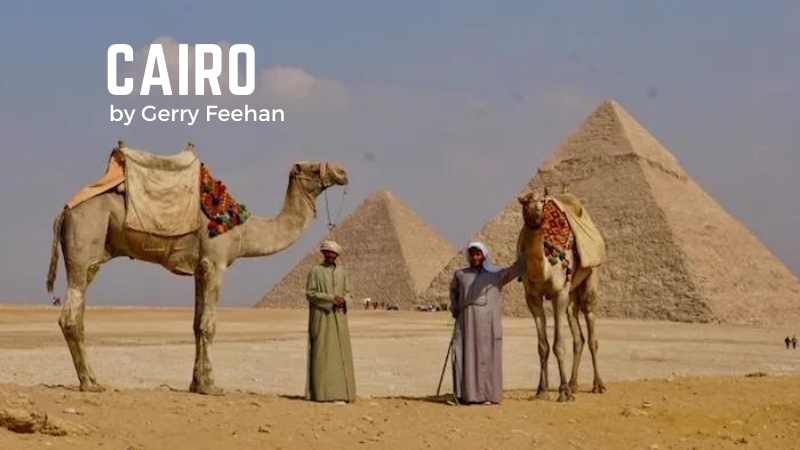
The Pyramids of Giza
The first thing one notices upon arrival in Egypt is the intense level of security. I was screened once, scanned twice and patted down thrice between the time we landed at the airport and when we finally stepped out into the muggy Cairo evening. At our hotel the scrutiny continued with one last investigation of our luggage in the lobby. Although Egyptian security is abundant in quantity, the quality is questionable. The airport x-ray fellow, examining the egg shaker in my ukulele case, sternly demanded, “This, this, open this.” When I innocently shook the little plastic thing to demonstrate its impermeability he recoiled in horror, but then observed it with fascination and called over his supervisor. Thus began an animated, impromptu percussion session. As for the ukulele, it was confiscated at hotel check-in and imprisoned in the coat check for the duration of our Cairo stay. The reasons proffered for the seizure of this innocuous little instrument ranged from “safety purposes” to “forbidden entertainment”. When, after a very long day, we finally collapsed exhausted into bed, I was shaken — but did not stir.
Al-Qahirah has 20 million inhabitants, all squeezed into a thin green strip along the Nile River. Fading infrastructure and an exponential growth in vehicles have contributed to its well-deserved reputation as one of the world’s most traffic-congested cities. The 20km trip from our hotel in the city center, to the Great Pyramid of Cheops at Giza across the river, took nearly two hours. The driver smiled, “Very good, not rush hour.”
Our entrance fee for the Giza site was prepaid but we elected to fork out the extra Egyptian pounds to gain access to the interior of the Great Pyramid. Despite the up-charge — and the narrow, dark, claustrophobic climb – the reward, standing in Cheop’s eternal resting place, a crypt hidden deep inside the pyramid, was well worth it. We also chose to stay after sunset, dine al fresco in the warm Egyptian evening, and watch the celebrated ‘sound and light’ performance. The show was good. The food was marginal. Our waiter’s name was Fahid. Like many devout Muslim men, he sported a zabiba, or prayer bump, a callus developed on the forehead from years of prostration. Unfortunately throughout the event Fahid hovered over us, attentive to the point of irritation, blocking our view of the spectacle while constantly snapping fingers at his nervous underlings. The ‘son et lumière’ show was a little corny, but it’s pretty cool to see a trio of 4500-year-old pyramids – and the adjoining Great Sphinx — illuminated by 21 st century technology.

The Great Sphinx

Giza at nightThe next night our group of six Canucks attended an Egyptian cooking class. Our ebullient hostess was Anhar, (‘the River’ in Arabic). Encouraged by her contagious enthusiasm, we whipped up a nice tabouli salad, spicy chicken orzo soup and eggplant moussaka. We finished up with homemade baklava. Throughout the evening, Anhar quizzed us about the ingredients, the herbs and spices, their origins and proper method of preparation. Anyone who answered correctly was rewarded with her approving nod and a polite clap. Soon a contest ensued. Incorrect answers resulted in a loud communal ‘bzzzt’ — like the sound ending a hockey game. It’s not polite to blow one’s own horn, but the Feehan contingent acquitted themselves quite nicely. If I still had her email, Anhar could confirm this.
Cairo was not the highlight of our three-week Egyptian holiday, but a visit to the capital is mandatory. First there’s the incredible Pyramids. But as well there’s the Egyptian Museum that houses the world’s largest collection of Pharaonic antiquities including the golden finery of King Tutankhamen and the mummified remains of Ramses the Great. Ramses’ hair is rust coloured and thinning a little, but overall he looks pretty good for a guy entering his 34 th century.

Ramses the Great

Then there’s Khan el-Khalili, the old souk or Islamic bazaar. We strolled its ancient streets and narrow meandering alleyways, continually set upon by indefatigable street hawkers. “La shukraan, no thanks,” we repeated ineffectually a thousand times. The souk’s cafes were jammed. A soccer match was on. The ‘beautiful game’ is huge in Egypt. Men and women sat, eyes glued to the screen, sipping tea and inhaling hubbly bubbly.

The Old Souk Bazaar

Selfies, Souk style
An aside. When traveling in Egypt, be sure to carry some loose change for the hammam (el baño for those of you who’ve been to Mexico). At every hotel, restaurant, museum and temple — even at the humblest rural commode — an attendant vigilantly guards the lavatory. And have small bills for the requisite baksheesh. You’re not getting change.
After our evening in the souk we had an early call. Our guide Sayed Mansour met us at 6am in the hotel lobby. “Yella, yella. Hurry, let’s go,” he said. “Ana mish bahasir – I’m not joking.” “Afwan,” we said. “No problem,” and jumped into the van. As we pulled away from the curb Sayed began the day’s tutorial, reciting a poem by Percy Blythe Shelly:
I met a traveller from an antique land,
Who said—“Two vast and trunkless legs of stone
Stand in the desert. . . . My name is Ozymandias, King of Kings;
Look on my Works, ye Mighty, and despair!”
And we were off, through the desert, to Alexandria. Founded by Alexander the Great in 332 BC, Egypt’s ancient capital was built on the Nile delta, where the world’s longest river meets the Mediterranean Sea. The day was a bit of a bust. The city was once renowned for its magnificent library and the famed Lighthouse of Alexandria. But the former burnt down shortly after Christ was born and the latter — one of the original seven wonders of the ancient world – toppled into the sea a thousand years ago. Absent some interesting architecture, a nice view of the sea from the Citadel — and Sayed’s entertaining commentary — Alexandria wasn’t really worth the long day trip. Besides, we needed to get back to Cairo and pack our swimwear. Sharm el Sheikh and the warm waters of the Red Sea were next up on the Egyptian agenda.

Gerry with some Egyptian admirers
Exodus Travel skilfully handled every detail of our trip: www.exodustravels.com And, if you’re thinking of visiting Egypt, I can suggest a nice itinerary. No sense reinventing the pyramid: [email protected]
Gerry Feehan is an award-winning travel writer and photographer. He lives in Kimberley, BC.

Thanks to Kennedy Wealth Management for sponsoring this series. Click on the ads and learn more about this long-term local business.
-

 Alberta6 hours ago
Alberta6 hours agoAlberta Independence Seekers Take First Step: Citizen Initiative Application Approved, Notice of Initiative Petition Issued
-

 Crime5 hours ago
Crime5 hours agoNational Health Care Fraud Takedown Results in 324 Defendants Charged in Connection with Over $14.6 Billion in Alleged Fraud
-

 Health4 hours ago
Health4 hours agoRFK Jr. Unloads Disturbing Vaccine Secrets on Tucker—And Surprises Everyone on Trump
-

 Bruce Dowbiggin7 hours ago
Bruce Dowbiggin7 hours agoThe Game That Let Canadians Forgive The Liberals — Again
-

 Agriculture2 days ago
Agriculture2 days agoCanada’s supply management system is failing consumers
-

 Alberta1 day ago
Alberta1 day agoCOVID mandates protester in Canada released on bail after over 2 years in jail
-
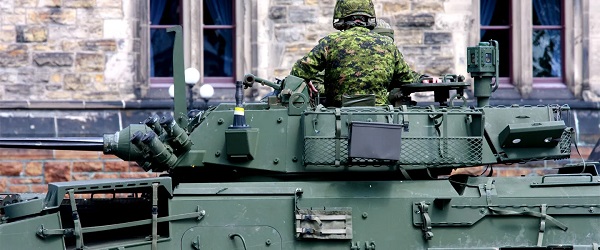
 armed forces1 day ago
armed forces1 day agoCanada’s Military Can’t Be Fixed With Cash Alone
-

 Business1 day ago
Business1 day agoCarney’s spending makes Trudeau look like a cheapskate




